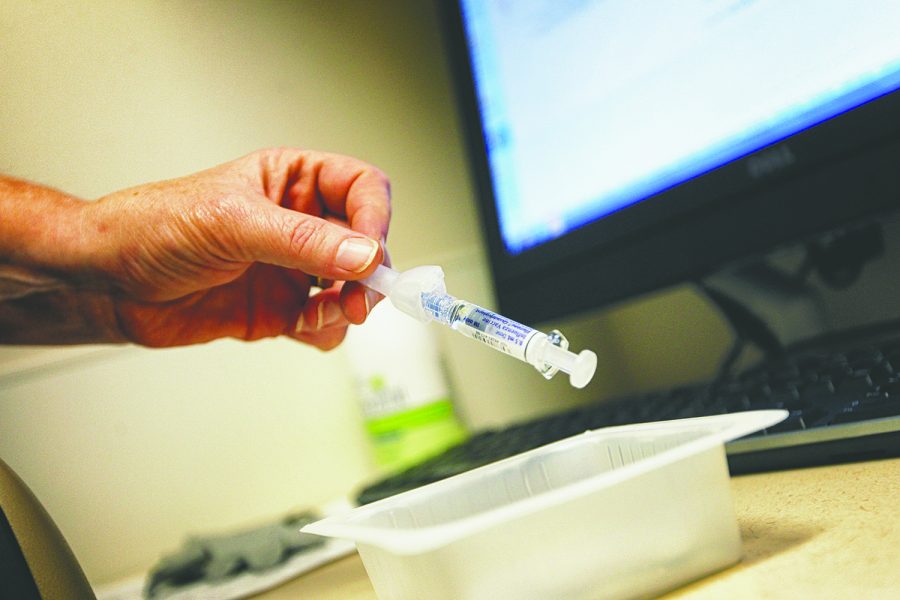UI, Iowa State researchers work to create universal flu vaccine
The vaccine can combat multiple strains of the flu and may only need to be taken once a decade to work effectively.
Photo Illustration by Paxton Corey
November 13, 2018
Researchers at the University of Iowa and Iowa State University have teamed up to develop a new influenza vaccine that, if it is efficient in combating the disease, could protect users for up to a decade.
UI pathology Professor Thomas Waldschmidt said the new vaccine has proven effective in preventing sickness in laboratory populations of mice and ferrets.
He also said a future phase of testing will involve introducing the vaccine and testing its effectiveness in macaques at the University of Wisconsin-Madison Primate Research Center.
The trials are necessary, he said, to ensure the vaccine’s safety before it is eventually introduced to humans.
Waldschmidt said the research team hopes it will prove effective at fighting various forms of the flu so that the virus will need years to evolve to a stage at which a new vaccine needs to be developed.
He is part of the group working on the new vaccine, which he said has been in development for around five years. The reason seasonal vaccines are currently used is because the influenza virus is extremely adaptable.
“Because of the immune system’s response to the virus, it [mutates], so antibodies will have difficulty recognizing and blocking it next year,” Waldschmidt said.
RELATED: 2018 flu season expected to be mild compared to previous years
The universal vaccine is designed to be inhaled as opposed to taken via injection to better fight the flu from the moment it enters the body.
“We would like to drive a response that’s poised at the site of the infection: the lungs and nasal passages,” UI pathology Professor Kevin Legge said.
In order to accomplish this, Legge and Waldschmidt collaborated with ISU Professor Balaji Narasimhan, whose expertise is in chemical and biological engineering.
Narasimhan is involved with nanotechnology research and developed a biodegradable nanoparticle backbone that, when combined with an influenza virus protein payload, induces the immune system to attack cells infected with the influenza virus. It also targets the surface of the virus and neutralizes it.
“It’s 100 percent safe,” Narasimhan said about the nanoparticles. “[They provide] the antigen to the immune system for the appropriate amount of time [and] to the appropriate immune cells.”
The new vaccine’s ability to protect against both old and new influenza virus strains gives it universal status, Legge said. The vaccine protects against H3 strains of the influenza A virus even when the vaccine is formulated to target the disparate H1 virus strains with the vaccination.
RELATED: Flu symptoms may be predictable, according to new UI study
Legge said the new vaccine also uses hunter-killer T-cells in addition to normal antibodies, something current seasonal vaccinations do not contain.
“To solve some of the newer challenges associated with pathogens that are emerging and re-emerging, you can’t use yesterday’s tools,” Narasimhan said.
The vaccine can be stored at room temperature for up to a year, he said, whereas current vaccines must be frozen in order to work effectively.
“That’s a game changer in respect to how these newer technologies can more efficiently make the vaccines of tomorrow,” he said.






